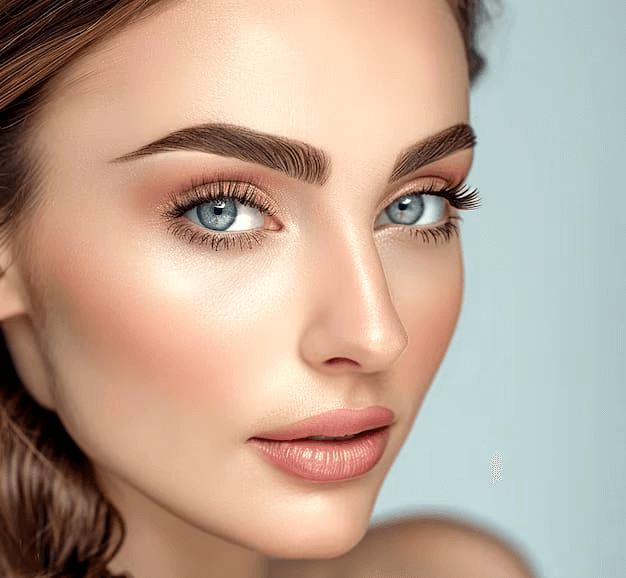
Essential Tips for Healthy and Beautiful Eyes
1. Nourish Your Eyes with a Balanced Diet

Good eye health begins with a nutritious diet. Incorporating foods rich in omega-3 fatty acids, lutein, zinc, and vitamins C and E can help prevent age-related vision issues such as macular degeneration and cataracts. To support your eye health, include the following in your meals:
- Leafy greens like spinach, kale, and collards
- Fatty fish such as salmon and tuna
- Protein sources like eggs, nuts, and beans
- Citrus fruits like oranges
- Oysters and pork
Maintaining a balanced diet also aids in managing your weight, which reduces the risk of obesity-related conditions such as type 2 diabetes, a major cause of adult blindness.
2. The Impact of Smoking on Eye Health

Smoking increases the risk of developing cataracts, optic nerve damage, and macular degeneration, among other serious health issues. If you have struggled to quit smoking in the past, persistence is key. The more attempts you make, the greater your chances of success. Seek guidance from your healthcare provider to assist in quitting.
3. Protect Your Eyes with Sunglasses

Wearing sunglasses is crucial for shielding your eyes from harmful ultraviolet (UV) rays. Excessive UV exposure can elevate the risk of cataracts and macular degeneration. Opt for sunglasses that block 99% to 100% of UVA and UVB rays, and consider wraparound styles for additional protection. Polarized lenses can reduce glare but may not offer extra UV protection. If you use contact lenses with UV protection, sunglasses still provide an added layer of defense.
4. Regular Eye Exams Are Crucial

Routine eye examinations are essential for maintaining optimal vision and identifying potential eye diseases, such as glaucoma, which may not present symptoms initially. Eye exams are conducted by:
- Ophthalmologists: Medical doctors specializing in eye care who can offer comprehensive treatment, including surgery.
- Optometrists: Professionals with specialized training who provide general eye care and diagnose most eye conditions, though they do not perform surgeries.
A thorough eye exam may involve:
- Reviewing your medical history
- Vision assessments for conditions like nearsightedness or astigmatism
- Tests for eye coordination and pressure to screen for glaucoma
- Detailed external and internal eye examinations
5. Benefits of Eye Exercises

Eye exercises can be beneficial for various conditions, including difficulties with focusing, strabismus, or double vision. They help improve muscle control and visual skills. Here are a few exercises to consider:
- The 20-20-20 Rule: Every 20 minutes, look at something 20 feet away for 20 seconds.
- Blink Breaks: Blink regularly to prevent dry eyes when using screens.
- Palms for Relaxation: Gently cover your closed eyes with your palms for 30 seconds to relax them.
- Eye Movements: Practice rolling your eyes and focusing on near and far objects to strengthen eye muscles.
6. Caring for the Skin Around Your Eyes
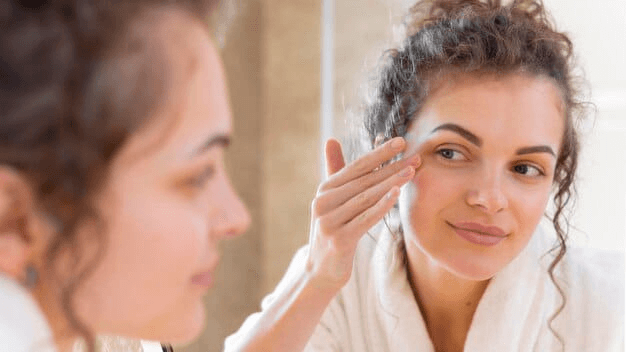
The delicate skin around your eyes is especially susceptible to early aging and environmental damage. To maintain a youthful and healthy appearance, it’s essential to pay extra attention to this sensitive area. Here are some comprehensive tips to ensure optimal care and protection:
Moisturize Regularly: Regular hydration is key to maintaining the skin’s elasticity and reducing fine lines. Opt for a high-quality eye cream specifically formulated for this area, or use your trusted facial moisturizer if it’s suitable. Consistent application helps to keep the skin around your eyes plump and nourished, which can minimize the appearance of wrinkles and dryness.
Check Ingredients: Be mindful of the ingredients in your eye creams and skincare products. Ingredients like retinoids, peptides, and vitamin C are known for their anti-aging and skin-rejuvenating properties. Retinoids can help boost collagen production, peptides can improve skin firmness, and vitamin C can brighten the skin and diminish dark circles. Choose products that target your specific concerns, such as fine lines, dark circles, or puffiness.
Gentle Application: The skin around your eyes is thinner and more delicate than the rest of your face, so it’s crucial to apply products with care. Use your ring finger or pinky finger when applying eye cream to avoid putting too much pressure on this sensitive area. Gentle tapping motions are preferable to prevent stretching or irritating the skin.
Sun Protection: Protecting your skin from UV damage is vital for preventing premature aging. Incorporate a broad-spectrum sunscreen into your daily routine, and consider wearing sunglasses to shield your eyes from harmful UV rays. Even on cloudy days, UV rays can penetrate the clouds and affect your skin, so don’t skip sun protection.
Massage: Incorporating a gentle massage into your skincare routine can be beneficial. Using your fingertips, softly massage the area around your eyes to stimulate circulation and help reduce puffiness. This can also promote lymphatic drainage, which helps to diminish any swelling and improve overall skin tone.
7. Eye Makeup Tips for Enhanced Beauty
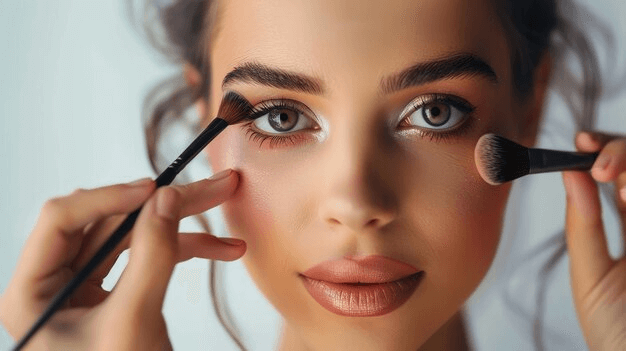
Makeup is a powerful tool to accentuate your eyes and elevate your overall look. By tailoring your makeup techniques to your eye color and addressing common concerns, you can create stunning, eye-catching results. Here are expanded tips to help you make the most of your eye makeup:
Use Vibrant Colors:
For Green or Hazel Eyes: Green and hazel eyes can be beautifully enhanced with purple shades. These colors create a striking contrast that makes green and hazel hues pop. Experiment with various purples, from deep plum to lavender, to find the tones that best complement your eye color. Additionally, bronze and gold can bring warmth and enhance the natural flecks in hazel eyes, giving a radiant glow.
For Blue Eyes: Blue eyes are complemented by navy and other shades of blue, which can enhance the cool tones of your irises. Navy eyeliner or eyeshadow can create a dramatic effect that makes blue eyes stand out. Other colors that work well include warm browns and copper tones, which contrast nicely with blue eyes and create a balanced look.
For Brown Eyes: Brown eyes are versatile and can handle a wide range of colors. Experiment with rich hues like emerald green, royal blue, and deep purples to add vibrancy. Additionally, earthy tones such as bronze, copper, and taupe can accentuate the depth of brown eyes and provide a natural, yet enhanced look.
Choose the Right Eye Cream:
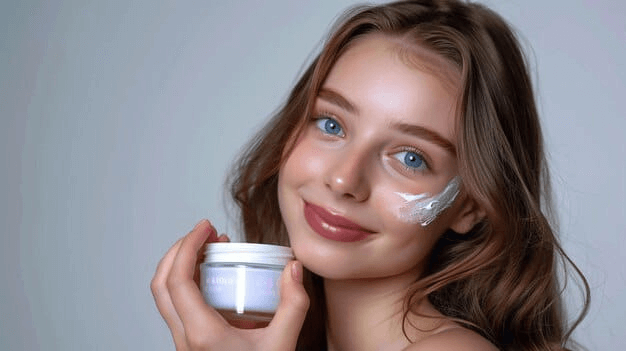
Opt for Fragrance-Free Eye Creams: When selecting an eye cream, choose products that are fragrance-free to minimize the risk of irritation. The skin around your eyes is delicate and sensitive, and added fragrances can cause discomfort or allergic reactions. Look for eye creams with gentle, hypoallergenic formulations that provide hydration and address specific concerns without compromising comfort.
Look for Key Ingredients: Consider eye creams that include ingredients like hyaluronic acid for hydration, peptides for firming, and caffeine for reducing puffiness. These ingredients work together to improve the appearance of the skin around your eyes, ensuring a smooth base for makeup application.
Cover Dark Circles:
Use Concealer and Primer: To effectively mask dark circles, start by applying a lightweight primer designed for the under-eye area. This helps to smooth out the skin and create a more even surface for concealer. Follow up with a creamy concealer that matches your skin tone or is slightly lighter to brighten the area. Apply the concealer in a triangular shape under your eyes to both conceal and highlight, which can help to diminish the appearance of dark circles.
Consider a Smoky Eye: For a dramatic effect that shifts focus from dark circles, consider applying a smoky eye. The sultry, smudged look draws attention away from the under-eye area and emphasizes the eyes themselves. Use dark, rich shades like charcoal or deep brown to create depth and intensity, blending them seamlessly with lighter shades for a gradient effect.
Address Puffiness:
Eye Creams with Caffeine: To tackle puffiness, opt for eye creams that contain caffeine. Caffeine helps constrict blood vessels and reduce swelling, making it an effective ingredient for combating puffiness. Apply the eye cream in the morning and gently pat it around your eyes to help depuff and refresh the area.
Cool Compresses: In addition to eye creams, using cool compresses can provide immediate relief from puffiness. Place chilled cucumber slices or a cold spoon over your eyes for a few minutes to reduce swelling. This method can help to soothe the area and reduce inflammation, making your eyes look more rested and alert.
Additional Tips for Perfecting Your Eye Makeup:
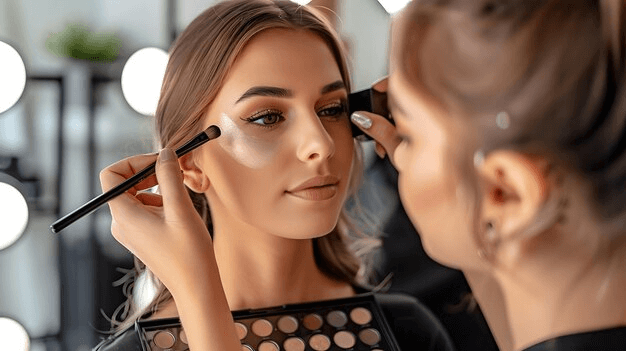
Define Your Eyebrows: Well-groomed eyebrows frame your eyes and enhance your overall makeup look. Use an eyebrow pencil or powder that matches your natural brow color to fill in any sparse areas. For a more defined shape, use a brow gel to set the hairs in place and create a polished appearance.
Use Eye Makeup Remover Wisely: When removing eye makeup, use a gentle, oil-free eye makeup remover to avoid irritating the delicate skin around your eyes. Soak a cotton pad with the remover, hold it gently against your eyelid for a few seconds, and then wipe away the makeup to prevent tugging and pulling on the skin.
Experiment with Eyeliner Techniques: Try different eyeliner techniques to enhance your eye shape. Winged eyeliner can lift and elongate the eyes, while tightlining (lining the waterline) can make your lashes appear fuller. Experiment with different styles and colors to find what best suits your eye shape and personal style.
Apply Mascara Strategically: To achieve voluminous, long lashes, use a mascara that adds both length and thickness. Apply the mascara from the roots to the tips of your lashes, wiggling the brush as you go to separate and coat each lash evenly. For added drama, apply multiple coats and consider using an eyelash curler before applying mascara to give your lashes extra lift.
8. Solutions for Common Eye Concerns

Addressing persistent issues around your eyes requires a multifaceted approach. Here’s an in-depth look at effective solutions for common eye concerns, offering both topical treatments and advanced options to help you achieve optimal results.
Sagging Skin:
Topical Treatments: To combat sagging skin around your eyes, start with eye creams formulated with potent antioxidants and peptides. Antioxidants, such as vitamin C and E, can neutralize free radicals and reduce oxidative stress, which helps maintain skin firmness. Peptides, on the other hand, stimulate collagen and elastin production, which are crucial for maintaining skin elasticity and reducing sagging.
Non-Surgical Treatments: For more noticeable sagging, consider non-surgical aesthetic treatments. Laser therapy, such as fractional lasers, targets the deeper layers of skin to stimulate collagen production and tighten the skin. Radiofrequency treatments use heat to encourage collagen renewal, resulting in firmer skin. Ultrasound treatments, like Ultherapy, also promote collagen production by delivering ultrasound energy to lift and tighten the skin. These non-invasive options can offer significant improvement with minimal downtime.
Surgical Options: In cases of severe sagging, surgical options such as blepharoplasty (eyelid surgery) may be necessary. This procedure involves removing excess skin and fat from the eyelids to correct sagging and provide a more youthful appearance. Consult with a board-certified dermatologist or plastic surgeon to explore these options and determine the best approach for your needs.
Wrinkles:
Topical Treatments: To address fine lines and wrinkles around your eyes, incorporate products containing retinol and hyaluronic acid into your skincare routine. Retinol, a derivative of vitamin A, accelerates cell turnover and promotes collagen production, which helps smooth out fine lines and improve skin texture. Hyaluronic acid, a powerful humectant, draws moisture into the skin and plumps up fine lines, making them less visible.
Professional Treatments: For more pronounced wrinkles, you might consider professional treatments. Botox injections can temporarily paralyze the muscles responsible for wrinkle formation, leading to smoother skin. Dermal fillers, such as hyaluronic acid-based fillers, can be injected to fill in deeper lines and restore lost volume. These treatments provide more immediate and dramatic results compared to topical products.
Advanced Procedures: For long-term solutions, consider fractional CO2 laser resurfacing or microneedling with radiofrequency. Fractional CO2 lasers target the skin’s outer layers, promoting new collagen growth and improving skin texture and tone. Microneedling with radiofrequency combines microneedles with radiofrequency energy to stimulate collagen production and improve the appearance of wrinkles and fine lines.
Thicker Lashes:
Topical Serums: To achieve fuller and thicker lashes, consider using over-the-counter lash serums that contain active ingredients like peptides and biotin. These serums work to nourish and strengthen your lashes, promoting growth and reducing breakage. Look for products with ingredients specifically designed to enhance lash health and appearance.
Prescription Options: For more significant results, prescription options such as Latisse (bimatoprost) are available. Latisse is a FDA-approved treatment that has been clinically proven to enhance lash growth, making them longer, thicker, and darker. It works by extending the growth phase of the lash cycle and increasing the number of lashes. Consult with a healthcare provider to determine if Latisse is suitable for you and to receive a prescription if needed.
Eyelash Extensions: Another option for achieving fuller lashes is eyelash extensions. Professional aestheticians apply individual synthetic lashes to your natural lashes, creating a more voluminous look. Extensions can be customized to suit your desired length and fullness. Regular maintenance and professional application are key to keeping your lash extensions looking their best and preventing damage to your natural lashes.
Additional Tips: To further support lash health, incorporate a gentle eye makeup remover to avoid excessive rubbing or pulling of your lashes. Regularly conditioning your lashes with natural oils, such as castor oil, can also help keep them hydrated and strong.
9. Healthy Habits for Long-Term Eye Care

To maintain eye health, integrate these practices into your daily routine:
- Avoid Rubbing Your Eyes: Minimize contact with your eyes to prevent irritation and infection.
- Wash Your Hands: Regular hand washing helps avoid transferring bacteria to your eyes.
- Stay Hydrated: Proper hydration prevents dryness and irritation.
- Manage Screen Time: Follow the 20-20-20 rule and ensure proper lighting to reduce eye strain.
- Use Eye Safety Gear: Protect your eyes with appropriate eyewear during activities like swimming or home projects.
Conclusion
Maintaining eye health and enhancing beauty involves a combination of proper nutrition, protective measures, regular check-ups, and skincare. By following these tips and incorporating them into your routine, you can enjoy vibrant, healthy eyes for years to come.




